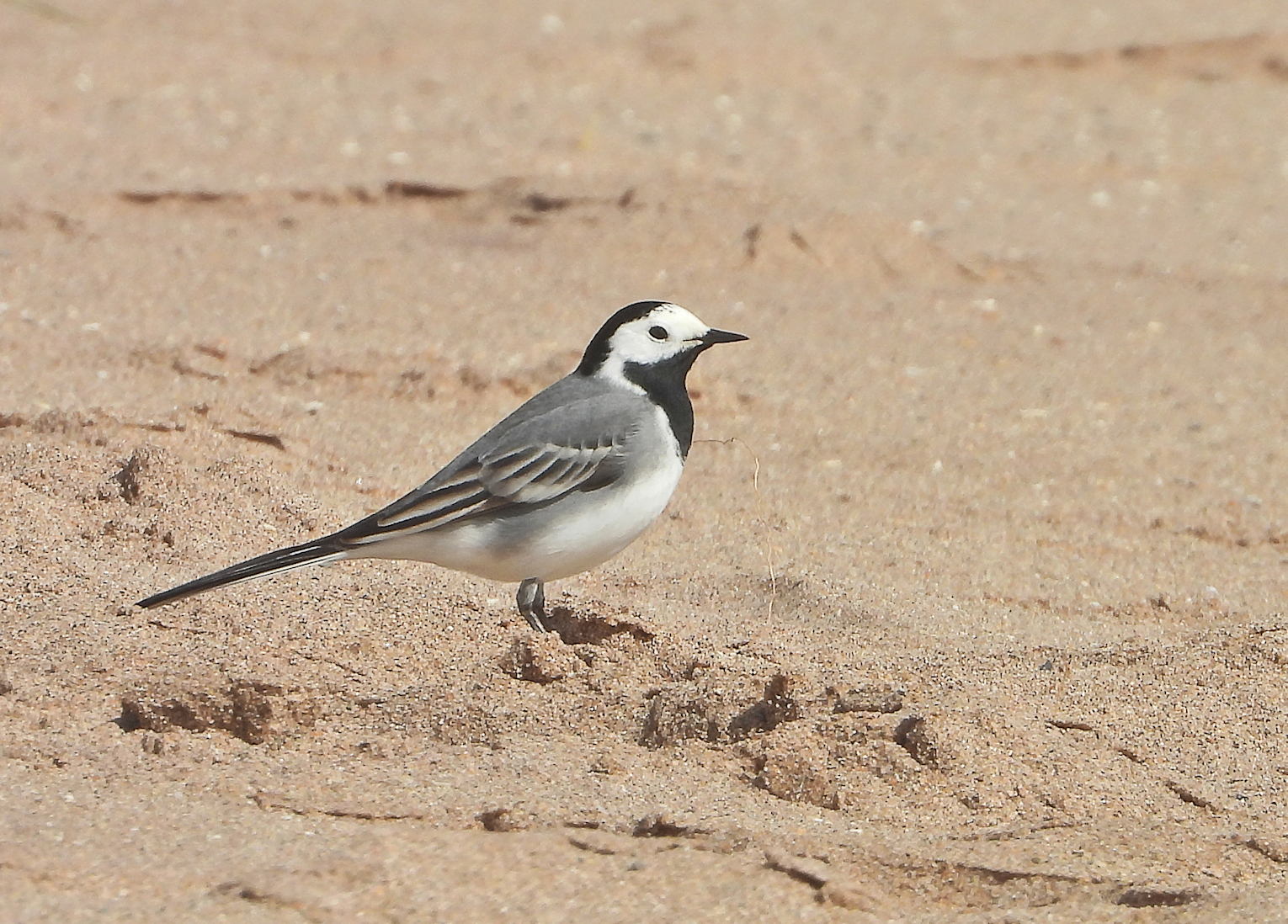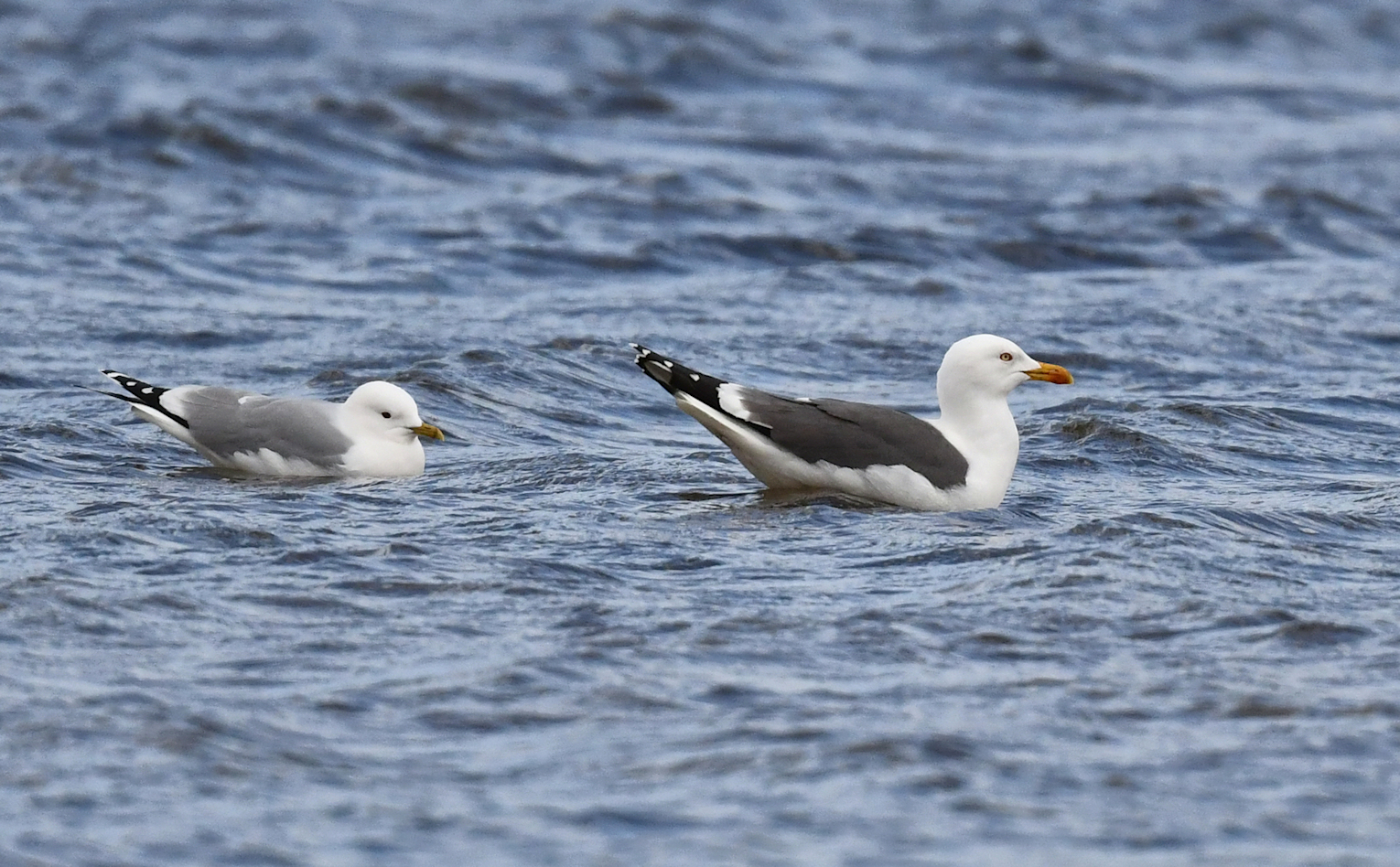Some Webs photos with the P1000 at East Haven, and more Webs photos from Murton NR including Clarke's Mining Bees opening and sealing holes they've dug to keep parasitical bees and wasps out to protect their eggs.
Bar-tailed Godwit with left leg injury Purple Sandpiper defying the incoming tide White Wagtails Clarke's Mining Bees
Bar-tailed Godwit, likely the same injured bird from my last month's Webs, then it was struggling to stand in the wind with a clearly damaged left leg. It has now lost the leg below the knee, but despite that it looks in good condition, alert and it flew off
Arty shot! Redshank footprints, this was the only small patch that didn't also include dog footprints
White Wagtail, one of five seen
Lesser black-backed and Common Gulls at Murton
Lapwing, probably six present
A Clark's Mining Bee, one of a small group digging holes and nest chambers at one of the viewpoints. Two different Bees are seen in the video above at the blue link, this one was opening a hole it had sealed when it went foraging.
"Nest building: Bare to sparsely overgrown areas in sparse forests Forest fringes or clearings, preferably in sandy soil, but also nests in humus soils, mostly in smaller aggregations with low nest density. The nest entrance is locked before each food supply flight. One to four brood cells are created per nest, often only 5 cm, a maximum of 30 cm below the surface"
This one was emerging from a hole and proceeded to cap it before flying off
Bolitobius. castaneus (best ID guess after a long search)
This species occurs throughout most of Europe with the exception of the far north of Fennoscandia, it is generally common in southern and western regions and more sporadic further north where there seems to have been a long –term decline since the nineteenth century. Here it occurs sporadically north to the Scottish Highlands; it is locally common in the southeast, East Anglia, the midlands and around the Scottish Borders but either absent or very rare elsewhere. Adults occur year-round, peaking in the spring and autumn, they occur among decaying vegetation and fungi in open woodland and wooded borders, agricultural land and parkland. We have found them among decaying terrestrial fungi in the autumn and extracted them from grass tussocks from agricultural headlands in the winter. Adults may be recorded by pitfall-trapping or sieving suitable samples over a sheet
So far the best ID from apps and Google Lens was a type of midge, I'll keep looking
A pair of Tufted Ducks with the female looking a bit Scaup like from a distance, it's not a Scaup












No comments:
Post a Comment